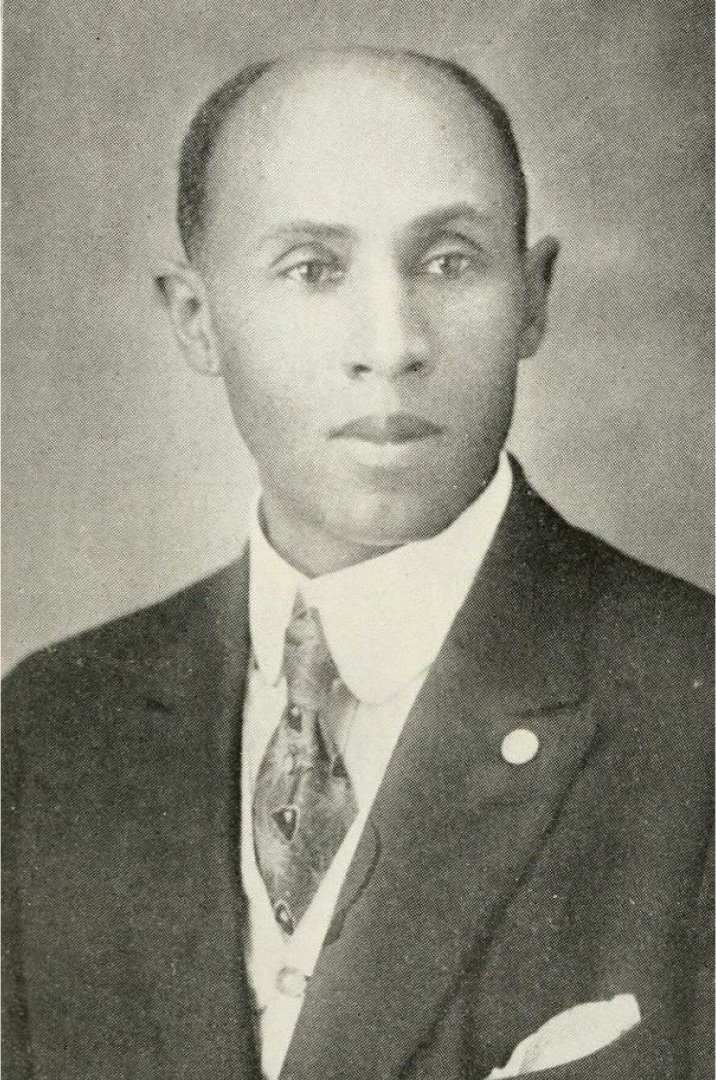Frederick M. Roberts
by Pebbla Wallace
You never know what you are going to learn about someone when you start doing historical research; that’s what happened to me when I began to write about the Evergreen Cemetery in Boyle Heights. I came across the name Frederick Roberts and accidentally discovered that there was more to his history than meets the eye. Not only was he the great-grandson of the enslaved Sally Hemings and Thomas Jefferson (3rd President of the United States), but Frederick was the first African-American to be elected to the California State Assembly in 1919. But as you will read, there were other firsts for the Roberts family.
The Roberts-Hemings Family
Frederick’s life began in Chillicothe, Ohio on September 14, 1879, where he was born to Andrew Jackson Roberts (referred to as AJ) and Ellen Hemings. Ellen’s father, Madison Hemings was one of the three children fathered by Thomas Jefferson and his enslaved woman, Sally Hemings, making Frederick their great-grandson. (Note: In 2000 the Thomas Jefferson Foundation acknowledged these findings, and published a report that presented DNA evidence to support this claim).
Frederick’s father was considered one of the first early African-American pioneers of Los Angeles. His family moved to Los Angeles in 1885 when Frederick was only six years old. At the time, the Los Angeles African-American population was less than three percent. His father first worked as a Drayman (a flat-bed wagon driver that transports goods) and also had a tracking and storage business. Later, he established the first Black-owned mortuary business in Los Angeles which became very successful.
Frederick
Frederick attended Los Angeles High School and was the first African-American to graduate from that institution. He then attended the University of Southern California, and later transferred to Colorado College where he graduated with honors. Frederick’s interest in politics began at an early age, first in high school, and later at college. Around 1908, after college Frederick served as the editor of the Colorado Springs Light newspaper where he wrote about political issues.
Frederick M. Roberts (on the right) with his father and brother in front of the family mortuary.
When he moved back to Los Angeles around 1911 he was extremely busy in various endeavors. First, he founded and was editor of the New Age Dispatch. Then he joined business forces with his father and brother in A.J Roberts and Sons, a mortuary business located in a two-story Victorian on Los Angeles Street. Frederick also became a well-known and respected figure in the Black community - becoming involved in the church, community improvement, and several political and civil rights groups including the NAACP and Urban League.
In 1918 Frederick ran for California Assembly. His candidacy was highly unusual, not only because he was the first African-American to do so, but because at the time he was running in a district that was majority white, and the State of California was entrenched in racism, attributed to the first Great Migration. He was able to build a multi-ethnic campaign staff of both Republications, progressives, and various other alliances. Along with this and the support of the community, he was able to win the assembly seat.
While in the California Assembly, Frederick was a major civil rights activist and advocated for various civil rights legislation as discrimination in Los Angeles grew with the arrival of more and more Southerners. To help combat this, he authored Bill 693 (1919) – which prohibited discrimination based on race, creed, or color to access to public accommodations; and Bill 452 (1921) which prohibited the publication of education materials and textbooks that portrayed negative images of People of Color. He also proposed civil rights and anti-lynching measures, sponsored legislation to improve public education, and helped to establish the University of California at Los Angeles.
Roberts married Pearl Willard Hinds on November 30, 1921, and had two daughters. He served four terms in the California Assembly and became known as “the dean” for his bipartisanship. But in 1934, he was defeated by Augustus F. Hawkins. Frederick ran for Congress twice but unfortunately lost both bids. In 1952, he was slated for an ambassadorship by President Eisenhower, but unfortunately his life was cut short by a fatal automobile accident in Los Angeles. He is buried at the historic Evergreen Cemetery in Boyle Heights. In 1957, the City of Los Angeles dedicated the Frederick M. Roberts Park located at 4700 Honduras Street in his memory.
To learn about the Madison-Hemings ancestry:
https://gettingword.monticello.org/families/hemings-madison/






